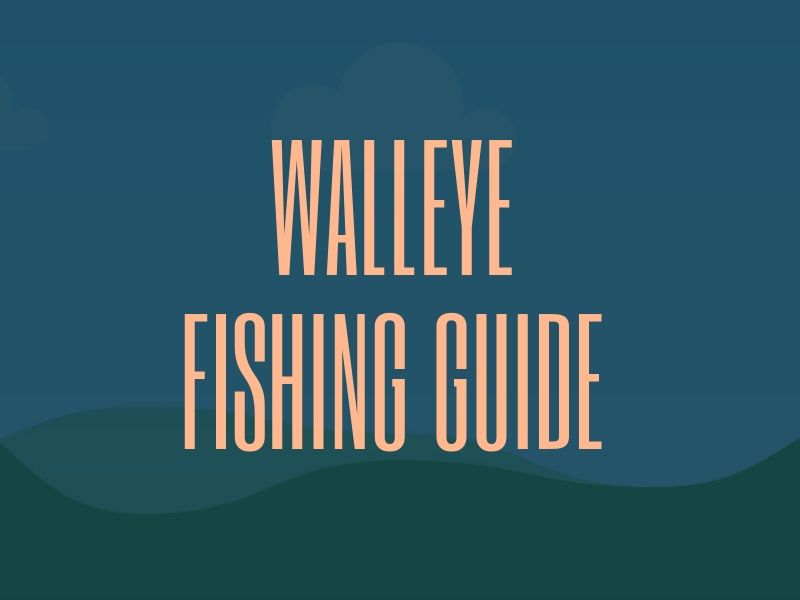How To Catch Walleyes
Walleye are a popular game fish commonly found in cooler waters throughout the northern U.S. and Canada. They average about 12 to 18 inches in length with large ones measuring around 30 inches. If you’re new to fishing for walleye, a little knowledge about where and when to look along with the best type of lures to use can greatly increase your success rate. Here we will review some of the best tips for catching walleye.
Where To Fish for Walleye
Walleye are common in the Northern United States and Canada. They are particularly common in Minnesota where walleye fishing is very popular. Walleye thrive in lakes and large rivers with cool water.
Walleye prefer to feed in low light, which is the best time to fish. From Midnight to dawn, and dusk are excellent feeding times where walleye are more active. You can also expect to have more success fishing on cloudy days than bright days. When feeding walleye typically move into the shallows near the shore, weed lines, rocky points and other structure to feed. This is where you will commonly find them.
During the day walleye spend their time in deeper waters. You will commonly find them at a depth of 15 to 30+ feet. Again, when light is low, you can expect them to move to shallower waters to feed.
Best Walleye Fishing Season
The best time of year to catch walleye is during and after the spawning season which is around late April to the middle of May. You will likely have the most success during this time of spring because this is when Walleye will be the most hungry and active. Often fall and summer months can still be quite good for fishing for walleye if you go out the right times, so don’t let it discourage you if it’s not spring.
Best Live Bait for Catching Walleye
To make your lure more attractive to walleye it’s always recommended to use live bait. For walleye fishing, you will primarily want to use nightcrawlers, leeches, or minnows. Leeches and nightcrawlers are best for summer walleye fishing, while minnows are best for fall, winter, and spring.
Walleye Fishing Lures
Jigs
Jigs are the most popular lure used for walleye fishing. Most commonly you will see anglers using jigs in combination with live bait for added attraction.
When using jigs in cold water it is best to use a slow presentation with a gentle tapping retrieve. In warmer water when walleye become more aggressive you can use are more lively jigging retrieve.
To use a jig, cast it, and let it sink to the bottom. Then retrieve it with pauses and twitches. Colder water means slower twitches. In warmer water use faster twitches.
Slip Sinker Rigs
Also known as “the Carolina Rig,” slip sinker rigs are for walleye fishing because walleye have been known to drop live bait as soon as they feel any resistance. Slip sinker rigs eliminate any resistance which allows walleye to go for the bait and potentially get hooked.
Slip sinker rigs have three parts: a hook, sliding weight, and stop. You need to make sure that the weight on your rig is heavy enough to sink to the bottom. Generally you need about ⅛ oz for every 10 feet of depth.
Spinners
Spinner rigs are one of the most common setups for walleye fishing. They can be setup a number of different ways, but most commonly you will see it utilized with a bottom bouncer or three-way rig to keep the spinner in contact with the bottom. For sinker weights, a ½ oz weight will sink you about 10 feet, with each additional ½ oz sinking you an additional 5 feet.
Slip Bobber Rigs
Slip bobber rigs are used to attract walleye at a specific depth. They can be incredibly effective for catching walleye. Here is a great resource on how to use slip bobber rigs for walleye fishing.
Final Thoughts
If you really want to increase your walleye catching success rate, you need to learn to be a versatile angler. Experiment with different rigs, different techniques, and fishing in different seasons, and with enough practice, you will find the methods that work best for you.
Related Posts:
Trout Fishing Tips
Bass Fishing Tips
Sauger Fishing Tips
